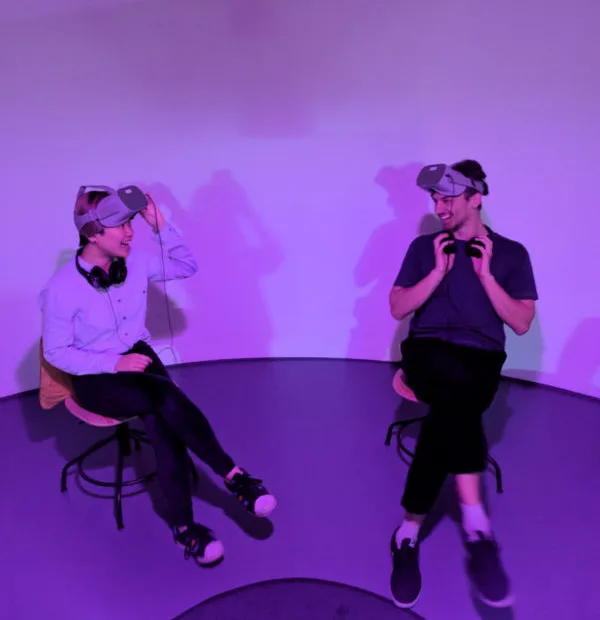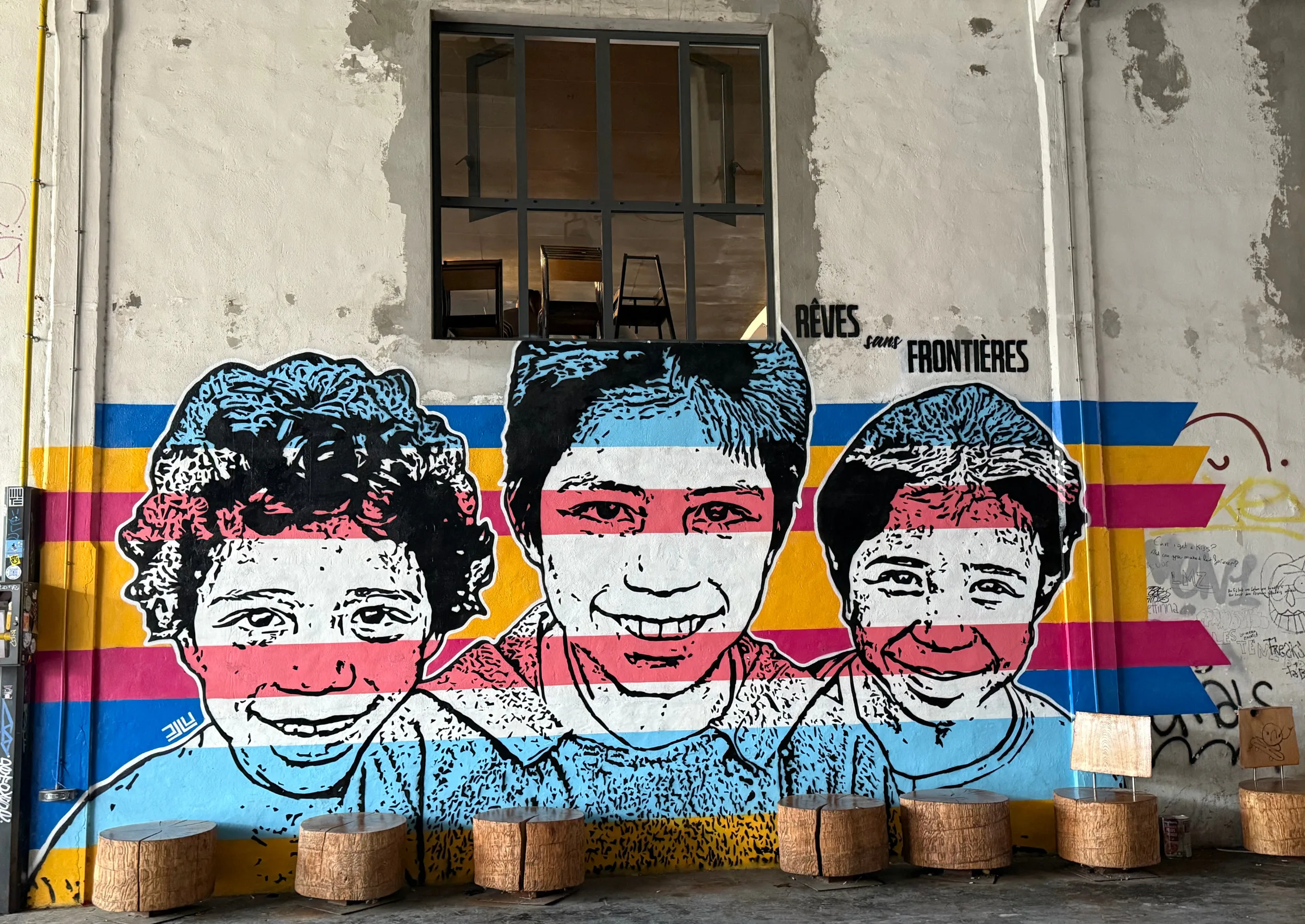As a wealth of immersive creative talent emerges in the UK, Catherine Allen and Chris Sizemore of Limina Immersive argue that more investment must be made into addressing how arts and entertainment immersive content will reach today’s audiences.
A lot of time, money and attention has gone into the emerging immersive media industry over the past few years. Immersive has been a significant theme in the UK Government’s Industrial Strategy and millions of pounds of public money have been invested in the sector. The money, talent, and effort invested are starting to pay off and the quality of the immersive output continues to rise. However, the sector faces a serious, urgent, and growing, issue – especially when it comes to the arts and entertainment sub-section of the emerging immersive industry. The chance that any individual piece of immersive work will reach a numerically significant, mainstream audience is slim – even for big budget projects. The task of reaching audiences is currently seen solely as the chore of each individual immersive project, in isolation – usually “reinventing the wheel” each time. We believe this isn’t an acceptable, or necessary situation – but we reckon it’s a challenge which can be addressed.
Our view is that, in order to build the audience of the future, the UK immersive industry must urgently, actively and systematically invest in reaching the audience of the present.
As the sector develops, so does the need to get work in front of audiences – especially since much of the culture and art immersive output is currently heavily subsidised. As an industry, our initial assumption was that in-home headset ownership would provide the obvious route to market, but this has not been borne out – and the situation seems unlikely to change in the near future. Facebook’s CEO Mark Zuckerberg admitted during the company’s latest earnings call that its virtual reality home headset sales haven’t lived up to expectations and earlier this year both Google and Samsung announced the discontinuation of their at-home mobile VR offerings.
However, in the meantime, location-based VR has demonstrated significant and immediate audience uptake. Property experts Savills conducted in-depth research and estimated that the UK location-based VR market has doubled since 2017, predicting it will “continue this trajectory as technology, concepts and brands develop.” BBC research by industry pioneer Zillah Watson also says, “location-based VR is the future – for now”.
But, despite location-based VR proving itself to be the most viable, immediate, “at scale” connector between consumer-facing immersive content and the public, there is very little specific industry attention or investment going into location-based exhibition. In the creative VR space, exhibition models tend to be perceived as an add-on to the pitches and/or grant applications from individual creative projects (Typical immersive project funding application form: “So, how’s your piece going to reach an audience, then?”), rather than as a holistic immersive industry challenge that deserves dedicated, consistent and ongoing public funding investment and policy support. In other words, all too often each immersive experience that’s commissioned has to address its “route-to-market” challenge more or less alone, starting from scratch, and in a vacuum. When it comes to reaching audiences, currently we’re in “every project for itself” territory. And, sadly, even when an individual project does manage to successfully reach respectable numbers of people, it usually won’t leave behind a repeatable, viable distribution framework which lasts beyond that project.
To summarise: there’s no systematic, immersive industry-wide approach to reaching audiences, and thus no “reach-an-audience leg up” for creators and funders of immersive experiences.
Is the immersive arts and entertainment sector really resigned to the “make it and they will come” paradox? Or is there a model that would encourage audiences, at scale, to book tickets and take their seats?
Immersive that is audience-centric, not creator-centric
Immersive media is still a novel experience for most of the public – for instance, only 5% of households have any sort of VR headset, and the users of these headsets are overwhelmingly likely to be men between 16 and 24. Changing this has to be the first step for the sector to grow. We need more people to experience arts and entertainment immersive media: start to get used to what they do and don’t like about it; see how it might fit, potentially regularly, into their lives; and help to shape this emerging medium through their reactions and feedback. As previously discussed, “in-home” isn’t currently a solution to reaching audiences – and, anyway, can the UK industry afford to wait until it is?
Just as today’s UK immersive sector cultivates the content creators of the future, we must also proactively nurture the consumers. In other words, in order to thrive now and in the future, the arts and entertainment immersive sector needs to purposefully develop and nourish an audience for immersive media – today. This will require time, effort, and money. So how, and where, can we reach these immersive newcomers? How can we discover what audiences need and want, particularly those who are new to immersive experiences?
There are special concerns here for creators, funders and exhibitors of immersive media because, unlike other forms of media, those in the sector have not grown up surrounded by an active, dynamic audience culture around this medium. As media consumers, most of us have observed thousands of people throughout our lives in the cinema, we have swapped views with dozens of colleagues on last night’s television and observed the reactions of hundreds of other music lovers at concerts.
However, most creators and funders of immersive media have not yet witnessed this level of audience feedback and culture within immersive, simply because the medium is so new. Potential Spielbergs, Bigelows and Satrapis need to watch movies – and, importantly, watch people watching movies. The same holds true for the emerging creators of immersive media. To raise your creative game as a VR maker, it is essential to spend time with real audience members. Unfortunately, it is hard to regularly find these opportunities to hang out with mainstream audience groups right now. This means it remains challenging for creators to close the “audience feedback loop” and make work that meaningfully connects with the wider public.
As a business, Limina focuses on the distribution and exhibition of virtual reality, on reaching audiences. We’ve screened creative VR to over 10,000 people, mostly newcomers, and we’ve spent a lot of time getting to know this audience we’ve grown. We’ve begun to notice first-hand the effects of the above conundrum: we are seeing a growing gap between the content experiences early-majority audiences will devote their spare time to and the overall body of immersive work currently being commissioned and made. There’s a divergence between what newcomer audiences want and expect and the immersive content currently coming through.
This points to an urgent need to begin closing the feedback loop between funders/creators and audiences.
Examples of great VR distribution
To be clear, and give credit where it’s due: there are, of course, many examples where public money has helped immersive experiences reach audiences. Examples include the theatrical VR of TOMtech at The Old Market in Brighton, the Modigliani VR experience at the Tate Modern, and Mat Collinshaw’s Thresholds – to name just a few.
And, there are loads more examples of commendable efforts in reaching audiences. But do you notice a trend in the above examples? The full responsibility of reaching an audience is usually tagged onto an individual project – reaching audiences is not often the core focus of the investment. Making something amazing is, perhaps understandably, the focus of such projects. There’s no framework or system already in place to help these projects reach audiences at scale. Each project has to face the “reach” challenge more or less anew, on its own, from scratch.
Arguably, we’re doing the equivalent of asking each and every commissioned filmmaker to (re)invent the concept of “the movie theatre” and then, all as part of their production, physically construct an actual movie theatre to screen their own completed film in. Sure, needs must and all that – but surely this situation isn’t acceptable or sustainable? There is a lot being asked of individual creators.
Another set of very promising examples-in-progress are the Audience of the Future demonstrators – these will reach today’s audiences, with serious amounts of public investment per project. But, as positive as this investment in reaching audiences is in the moment, the sector must ensure that each demonstrator has a firm legacy of audience understanding and distribution that lasts beyond AoF.
We would argue that it’s time to tackle immersive distribution in a systematic way, with a sector-wide view and remit. We believe that investment, now, in distribution and exhibition, to nurture a system for reaching audiences will add longevity and value-for-money to all the wonderful immersive projects mentioned above and others currently in production – plus, crucially, to the future even-more-amazing work that will follow.
Immersive can reach audiences, at scale, today
We urge: let’s not flounder around in the dark, telling ourselves that a lack of audience and audience insight is to be expected, and how it was always going to be in these “early days”. It is risky and unsustainable for the UK immersive sector to tell ourselves that Silicon Valley will eventually solve our audience and distribution challenges, and in the meantime to “be ready” and just focus on non-audience-facing R&D.
The UK immersive sector can and must reach today’s audience, at scale. To do this, as an industry we need to more fully embrace, nurture, and systematically invest in location-based exhibition of arts and entertainment immersive experiences. This evolution could be kick-started by reallocating certain current pots of funding, or by securing new ones. There are plenty of potential approaches that can be explored, finesed, and implemented to help make the UK’s immersive sector more audience-centric.
What’s important next, we feel, is to have an urgent, sector-wide conversation about this challenge.
We’d love to hear what you make of our argument. Please do get in touch: chris@liminaimmersive.com
About Limina Immersive
For three years Limina Immersive and our academic research partners have been dedicated to finding ways that arts and entertainment virtual reality can both fit into and improve real people’s lives. Through our VR Theatre and dozens of VR arts events, we have reached a diverse audience of over 10,000 people. Thousands have contributed to our qualitative and quantitative research. We’ve figured out how to (and how not to!) consistently reach and sell tickets to diverse, mainstream, novice VR audiences – it can be done, the feedback loop can be closed.
Limina’s current goal is to share with immersive creators, funders, venues, and policy-makers our results and the insights from our three years of unparalleled in-location VR audience research. We hope to demystify the VR audience journey and increase the chance that immersive media projects will be successful with the public.
Related Blogs
Insights from the Labour Party Conference 2025
Creative PEC Policy Adviser Emily Hopkins attended the Labour Party Conference in September 2025.
Association of South-East Asian Nations’ long-term view of the creative economy
John Newbigin examines the ASEAN approach to sustainability and the creative economy.
Take our Audience Survey
Take our quick survey and you might win a National Art Pass.
Culture, community resilience and climate change: becoming custodians of our planet
Reflecting on the relationship between climate change, cultural expressions and island states.
Cultural Industries at the Crossroads of Tourism and Development in the Maldives
Eduardo Saravia explores the significant opportunities – and risks – of relying on tourism.
When Data Hurts: What the Arts Can Learn from the BLS Firing
Douglas Noonan and Joanna Woronkowicz discuss the dangers of dismissing or discarding data that does…
Rewriting the Logic: Designing Responsible AI for the Creative Sector
As AI reshapes how culture is made and shared, Ve Dewey asks: Who gets to create? Whose voices are e…
Reflections from Creative Industries 2025: The Road to Sustainability
How can the creative industries drive meaningful environmental sustainability?
Creating value: the creative economy beyond culture by Marta Foresti
Marta Foresti explains the value of international cooperation as she becomes Chair of the GCEC.
Taking stock of the Creative Industries Sector Plan
We summarise some of the key sector-wide announcements from the Creative Industries Sector Plan.
Conversations between the Global North and South
Unsettling and reordering the creative economy
Why higher education matters to the arts, culture and heritage sectors
Professor Dave O’Brien, Professor of Cultural and Creative Industries at University of Manches…












